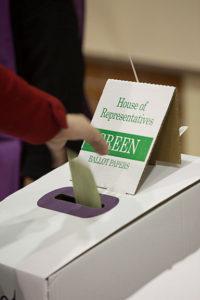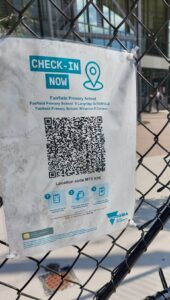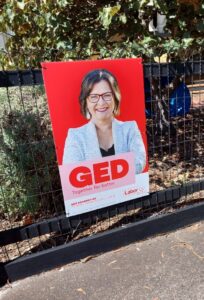Australian Electoral Commission takes to Twitter to rebut election disinformation
Articles 
Don’t Spread Disinformation on Twitter or the AEC Will Roast You (gizmodo.com.au)
Federal Election 2022: How the AEC Is Preparing to Combat Misinformation (gizmodo.com.au)
From the horse’s mouth
Australian Electoral Commission
AEC launches disinformation register ahead of 2022 poll (Press Release)
Previous coverage on HomeNetworking01.info
Being cautious about fake news and misinformation in Australia
My Comments
This next 18 months is to be very significant as far as general elections in Australia go. It is due to a Federal election and state elections in the most populous states taking place during that time period i.e. this year has the Federal election having to take place by May and the Victorian state election taking place by November, then the New South Wales state election taking place by March 2023.

Two chances over the next 18 months to benefit from the democracy sausage as you cast your vote
Kerry Raymond, CC BY 4.0 <https://creativecommons.org/licenses/by/4.0>, via Wikimedia Commons
Oh yeah, more chances to eat those democracy sausages available at that school’s sausage sizzle after you cast that vote. But the campaign machine has started up early this year at the Federal level with United Australia Party ads appearing on commercial TV since the Winter Olympics, yard signs from various political parties appearing in my local neigbbourhood and an independent candidate for the Kooyong electorate running ads online through Google AdSense with some of those ads appearing on HomeNetworking01.info. This is even before the Governor General had served the necessary writs to dissolve the Federal Parliament and commence the election cycle.
This season will be coloured with the COVID coronavirus plague and the associated vaccination campaigns, lockdowns and other public-health measures used to mitigate this virus. This will exacerbate Trump-style disinformation campaigns affecting the Australian electoral process, especially from anti-vaccination / anti-public-health-measure groups.
COVID will also exacerbate issues regarding access to the vote in a safe manner. This includes dealing with people who are isolated or quarantined due to them or their household members being struck down by the disease or allowing people on the testing and vaccination front lines to cast their vote. Or it may be about running the polling booths in a manner that is COVID-safe and assures the proper secret ballot.
There is also the recent flooding that is taking place in Queensland and NSW with it bringing about questions regarding access to the vote for affected communities’ and volunteers helping those communities. All these situations would depend on people knowing where and how to cast “convenience votes” like early or postal votes, or knowing where the nearest polling booth is especially with the flooding situation rendering the usual booths in affected areas out of action.
The Australian Electoral Commission who oversees elections at a federal level have established a register to record fake-news and disinformation campaigns that appear online to target Australians. They will also appear at least on Twitter to debunk disinformation that is swirling around on that platform and using common hashtags associated with Australian politics and elections.
Add to this a stronger wider “Stop And Consider” campaign to encourage us to be mindful about what we see, hear or read regarding the election. This is based on their original campaign ran during the 2019 Federal election to encourage us to be careful about what we share online. Here, that was driven by that Federal election being the first of its kind since we became aware of online fake-news and disinformation campaigns and their power to manipulate the vote.
There will be a stronger liasion with the AEC and the online services in relation to sharing intelligence about disinformation campaigns.
But the elephant in the room regarding election safety is IT security and cyber safety for a significant number of IT systems that would see a significant amount of election-related data being created or modified through this season.

Even the QR-code contact-tracing platforms used by state governments as part of their COVID management efforts have to be considered as far as IT security for an election is concerned – like this one at a school that is likely to be a polling place
This doesn’t just relate to the electoral oversight bodies but any government, media or civil-society setup in place during the election.
That would encompass things ranging from State governments wanting to head towards fully-electronic voter registration and electoral-roll mark-off processes, through the politicians and political parties’ IT that they use for their business process, the state-government QR-code contact tracing platforms regularly used by participants during this COVID-driven era, to the IT operated by the media and journalists themselves to report the election. Here, it’s about the safety of the participants in the election process, the integrity of the election process and the ability for voters to make a proper and conscious choice when they cast their vote.
Such systems have a significant number of risks associated with their data such as cyber attacks intended to interfere with or exfiltrate data or slow down the performance of these systems. It is more so where the perpetrators of this activity extends to adverse nation states or organised crime anywhere in the world. As well, interference with these IT systems is used as a way to create and disseminate fake news, disinformation and propaganda.
But the key issue regarding Australia’s elections being safe from disinformation and election interference is for us to be media-savvy. That includes being aware of material that plays on your emotions; being aware of bias in media and other campaigns; knowing where sources of good-quality and trustworthy news are; and placing importance on honesty, accuracy and ethics in the media.
Here, it may be a good chance to look at the “Behind The News” media-literacy TV series the ABC produced during 2020 regarding the issue of fake news and disinformation. Sometimes you may also find that established media, especially the ABC and SBS or the good-quality newspapers may be the way to go for reliable election information. Even looking at official media releases “from the horse’s mouth” at government or political-party Websites may work as a means to identify exaggeration that may be taking place.
Having the various stakeholders encourage media literacy and disinformation awareness, along with government and other entities taking a strong stance with cyber security can be a way to protect this election season.

